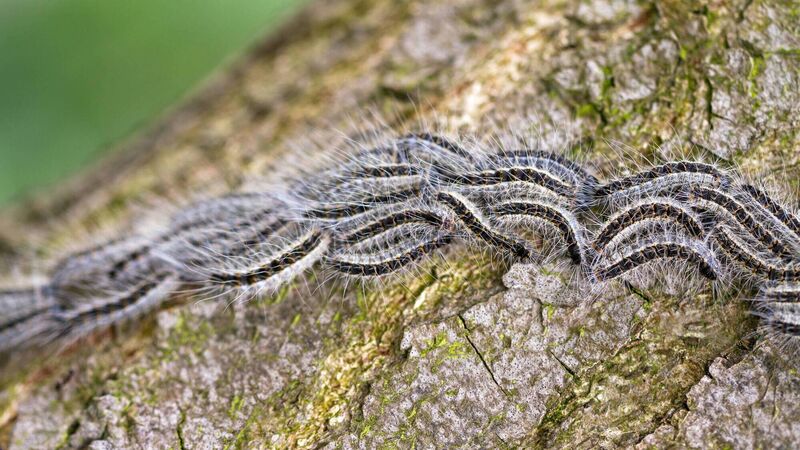Ireland on alert for dangerous and invasive OPM pest first seen here in June

An observant walker who spotted a caterpillar nest on a freshly planted oak tree in Dublin last June has put Ireland on alert for more sightings of the Oak Processionary Moth.
It was the first time the dangerous and invasive pest was seen here, and there is now a full-powered effort led by the Department of Agriculture, Food and the Marine to maintain Ireland’s “protected zone” status as an area free of the pest, which also poses a public health risk.
A Teagasc nursery stock meeting on plant health which took place through Zoom last week heard how the first case of Oak Processionary Moth (OPM) in Ireland was discovered. OPM is a native species of Central and Southern Europe that started to move into northern Europe 15 years ago and arrived in the UK in 2006, from a tree planted in 2005 close to a housing development.
Declan Kealy, Department of Agriculture, Food and the Marine told the meeting that OPM is highly invasive and is not just a plant health concern but also a human one.
“If humans come in contact with the hairs on the caterpillar, a protein contained within leads to a rash on the skin that causes irritation,” he said.
“It also causes irritation to the eyes and throat and in some people causes breathing difficulties.
“It does the same thing to pets.”
The meeting was told there are four main stages to OPM’s life cycle: egg, caterpillar, pupation, moth. The egg stage occurs from mid-August to April; it attaches itself to the bark of the oak tree and is very difficult to detect, particularly on a mature oak tree.
The April to July caterpillar stage is much easier to identify; they move and perform a procession, hence the name, processionary moth.
The caterpillars move up and down the oak tree and feed on the foliage of that tree.
During the third stage, it moves from caterpillar to moth, and in the fourth stage, the moth emerges.
“When we see a lot of moths, we are losing the battle on this, because they go on to lay the eggs, and the cycle starts all over again,” said Mr Kealy.
“Findings across Europe have shown that with heavy infestations, the caterpillar will move to other trees like beech and chestnut. This is very concerning, particularly in highly infectious areas where there are a lot of caterpillar nests.
After the samples found in June were sent to the lab, the infestation was traced back to a consignment that came in from Belgium. All trees were then removed and destroyed and it was also reported to the EU Commission.”
Since 2014, Ireland is part of the protected zone for OPM. This means ensuring OPM remains absent, by following appropriate EU measures and carrying out annual surveys.
“The focus now,” said Department official Declan Kealy, “is on protecting that zone and how that can be achieved”.
“We need to promote and grow Irish oak trees and use Irish products.
“We are also trying to strengthen the legislation around the importation of oak trees that are greater than 1.2m in height.
“The Netherlands has since informed us that it cannot meet the criteria required here in Ireland, and it is therefore illegal to import oak from the Netherlands.”
In the Netherlands, in June and July, thousands of people visited doctors with skin complaints like itching, bumps and rashes caused by OPM caterpillars. A large proportion of those affected are children under four.
Declan Kealy said that awareness is crucial in the battle against OPM.
“The Department has engaged in a social media campaign to increase that.
“Surveys are also being carried out, and a new plant health regulation was introduced by the Department in December, 2019 to identify risk.
“All nurseries, garden centres, landscapers, local authorities, retailers and on-line sellers must now be registered with the Department.
“All links in the chain are now identifiable, meaning if an issue arises, it can be addressed effectively.
“The plant’s passport now plays a more important role, and a biosecurity strategy has also been put in place.”









